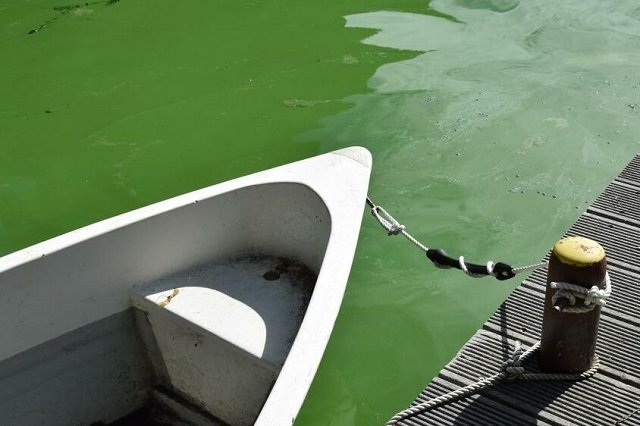Nelson, New Zealand – Scientists at New Zealand’s Cawthron Institute have uncovered a new lead that might help to identify the source of a deadly toxin found in fish and shellfish worldwide.
Tetrodotoxin (TTX) is most famous for being the toxin in pufferfish that are consumed as a delicacy (fugu) in Japan and Korea. Tetrodotoxin is a global scientific mystery because no one knows where it comes from. However, a new paper published by scientists at New Zealand’s Cawthron Institute has found a potential link between cyanobacteria, blue-green algae that can cause harmful algal blooms, and TTX in pipi, a common clam species in New Zealand with significant cultural value for tangata whenua.
In response to increased global concern about the presence of TTX in shellfish, Cawthron Institute conducted a survey of various non-commercial shellfish species at sites around New Zealand between 2016 and 2018. The goal of the survey was to gain a greater understanding of the presence of TTX in New Zealand’s marine ecosystems and included 766 samples from 8 different species. Although low levels of TTX were found in some other species of shellfish, the large majority of TTX was found in pipis. Most of the pipis contained detectable but not high levels of TTX, but clams from one site in the Hokianga Harbour had higher levels. While not at a level that would cause serious health concerns, this was still a surprising result that warranted further research.
Cawthron leads the New Zealand government-funded Seafood Safety Research Platform, and through the Platform, Cawthron scientist Laura Biessy began investigating this issue as part of her PhD thesis. Her goal was to use a molecular technique called ‘metabarcoding’ to analyse the microbial community, including bacteria, present in the organs of both toxic and non-toxic pipis from around New Zealand. The intent of this research was to pinpoint a potential TTX producer, as bacteria and cyanobacteria are known producers of toxins in all ecosystems.
The core finding of the study was a potential link between marine cyanobacteria and TTX, as cyanobacteria was found in the digestive glands and other organs of the toxic pipis, but not in the non-toxic pipis. Until now, cyanobacteria have not been considered as a possible TTX source because most studies have focussed on other bacteria (mostly Vibrio species) as potential producers although it has never been definitively proven. While more investigation is required to confirm this link, it is a promising step forward in the hunt for the elusive source of this toxin.
Laura Biessy said the goal of the research is to better understand the food safety risks posed by the toxin.
“Although no one has become sick yet in New Zealand from consuming the toxin, as ocean temperatures rise due to climate change, it may become more problematic. Understanding what produces the toxin will help us to develop better monitoring programmes and risk assessments,” Laura Biessy said.
Stay Always Informed
Join our communities to instantly receive the most important news, reports, and analysis from the aquaculture industry.
“Cawthron’s research into TTX reflects our role as leaders of the Seafood Safety Platform in New Zealand and global leaders in the development of innovative, world-leading seafood safety technologies.
“We are committed to the development of best practice methodologies for industry and the public that reflect our advanced understanding of known and emerging seafood safety risks.
“The next step in my research into the source of TTX is to confirm whether the link between cyanobacteria and TTX is supported. Now that there is a new lead, it would be great to look at the presence of the same cyanobacteria in other toxic species in NZ and globally, for example mussels and oysters in Japan or Europe. We could then try to culture these cyanobacteria to see if they produce TTX.”
Laura will finish her PhD at the end of the year and she intends to apply for early career funding to progress this exciting research further.
Reference (open access):
Laura Biessy, John K. Pearman, Kirsty F. Smith, Ian Hawes and Susanna A. Wood. Seasonal and Spatial Variations in Bacterial Communities From Tetrodotoxin-Bearing and Non-tetrodotoxin-Bearing Clams. Front. Microbiol., 05 August 2020 | https://doi.org/10.3389/fmicb.2020.01860
Editor at the digital magazine AquaHoy. He holds a degree in Aquaculture Biology from the National University of Santa (UNS) and a Master’s degree in Science and Innovation Management from the Polytechnic University of Valencia, with postgraduate diplomas in Business Innovation and Innovation Management. He possesses extensive experience in the aquaculture and fisheries sector, having led the Fisheries Innovation Unit of the National Program for Innovation in Fisheries and Aquaculture (PNIPA). He has served as a senior consultant in technology watch, an innovation project formulator and advisor, and a lecturer at UNS. He is a member of the Peruvian College of Biologists and was recognized by the World Aquaculture Society (WAS) in 2016 for his contribution to aquaculture.




